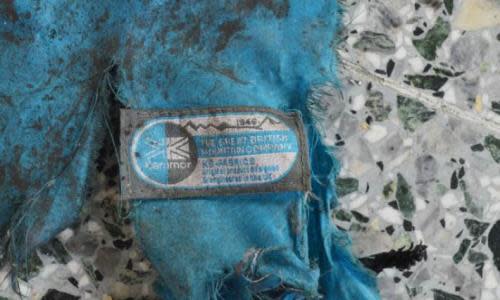Manchester bomb used same explosive as Paris and Brussels attacks, says US lawmaker

The bomb detonated by the Manchester terrorist Salman Abedi used the same explosive as those in the Paris and Brussels attacks, a US lawmaker has said, pointing to a possible link to the same terrorist network.
The chair of the US House’s homeland security committee, the Republican Mike McCaul, said the bomb suggested a “level of sophistication” that implied its maker or makers may have had foreign training.
McCaul said the backpack carried by Abedi in Monday’s attack was loaded with TATP, the explosive used in the November 2015 attacks in Paris and the Brussels attack in March 2016 carried out by Islamic State extremists. He described it as “a classic explosive device used by terrorists”.
TATP – triacetone triperoxide – can be made from household chemicals, but is unstable and unreliable. It was used in the 7 July 2005 attacks on London, but failed in an attack two weeks later.
McCaul said the evidence known about the attack so far indicated “we’re not dealing with a lone wolf situation”.
A former counter-terrorism specialist with extensive experience of bomb disposal and knowledge of the Middle East described the design as “unsophisticated”. “Making a bomb is not rocket science. You can find instructions on Isis forums and on the internet,” he said.
But the specialist – who declined to be named – added: “It’s unusual to get it right first time. Normally you would expect people to have a fairly extensive period of testing behind them. This indicates to me there is a broader network and that Abedi was the mule rather than the bombmaker.” He added: “The bombmaker is still out there.”
The specialist said that the “improvised initiator” suggested that the explosives used in the bomb were “home made”. The scenario that army explosives might have been imported from Libya appeared less likely, he said.
Will Geddes, a British security specialist, said the detonator used in the Manchester bomb was a “specially acquired piece of equipment”.
“The most interesting part was the detonator itself. It takes the bomb beyond homemade. It suggests it was well put together and packaged, and professionally assembled.”
Geddes, the chief executive of the security consultants ICP, added: “I think it’s highly unlikely that Abedi got this piece independently. I think the bomb would have been delivered in its final format either by a courier or by the bombmaker.”
The detonator functioned as a dead man’s trigger, he said. He added that the bomb could have been set off either by depressing a “pressel switch” or by letting go of it, in the event that the bomber was shot or incapacitated.
British-born Abedi, 22, set off his explosive in the foyer of the Manchester Arena at 10.30pm on Monday night, at the conclusion of an Ariana Grande concert, killing 22 people and himself.
British authorities are exploring whether Abedi, who grew up in Manchester but had travelled to and from Libya since 2011, had links with terrorist networks across Europe and north Africa.
An official said one element of the investigation was whether Abedi was part of a larger terror cell that included Mohamed Abrini, otherwise known as “the man in the hat”, with connections to the Brussels and Paris attacks. Abrini visited Manchester in 2015.
Other Manchester connections are also being investigated, including with the British former Guantánamo Bay detainee Ronald Fidler – also known as Jamal al-Harith – who blew himself up at a military base in Iraq in February.
British cooperation with the US on investigations into Abedi’s broader links has been hampered by leaks from US officials of sensitive information about Abedi to the media. The New York Times published detailed photographs taken at the crime scene, almost all of which were taken by British police. The photographs suggest the bomb was relatively sophisticated, requiring a degree of expertise to build.
It contained the explosive that McCaul said was TATP placed in a lightweight metal container. Also recovered at the scene was a Yuasa 12-volt, 2.1 amp lead-acid battery. The detonator appeared to have a small circuit board soldered inside one end. The pictures indicate it was carried in a blue rucksack made by the Karrimor outdoor company.
Nuts and bolts were packed around the bomb. Such was the power of the blast it generated that fragments of metal penetrated doors and walls of the arena. Nuts and bolts were removed from the bodies of survivors during surgeries.
Abedi was standing in the middle of a crowd when he detonated his explosive. The upper part of his body was thrown towards the entrance to the arena by the blast.
Even before the leak of photographs from the scene, the home secretary, Amber Rudd, said she had formally complained to the US administration about the leaking of sensitive information, saying it was harming investigations.
“The British police have been very clear that they want to control the flow of information in order to protect operational integrity, the element of surprise,” Rudd said on Wednesday morning. “So it is irritating if it gets released from other sources and I have been very clear with our friends that should not happen again.”

 Yahoo News
Yahoo News 